Emulsion Mask
Emulsion Mask
As a pattern was formed using soda lime coated with silver halide, it is a negative type which light exposed part is not dissolved in developing solution and forms patterns. It has ability to form line and space images which are greater than 20um accurately.
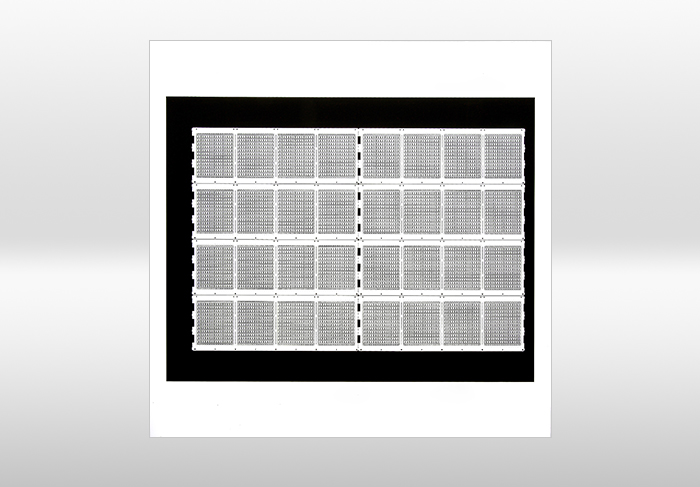
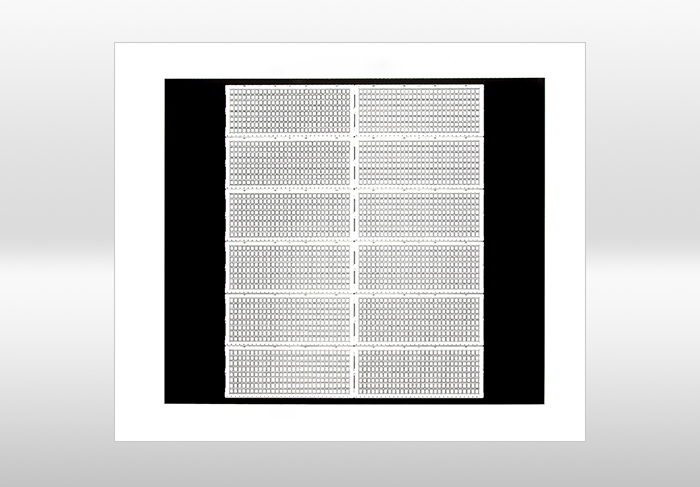
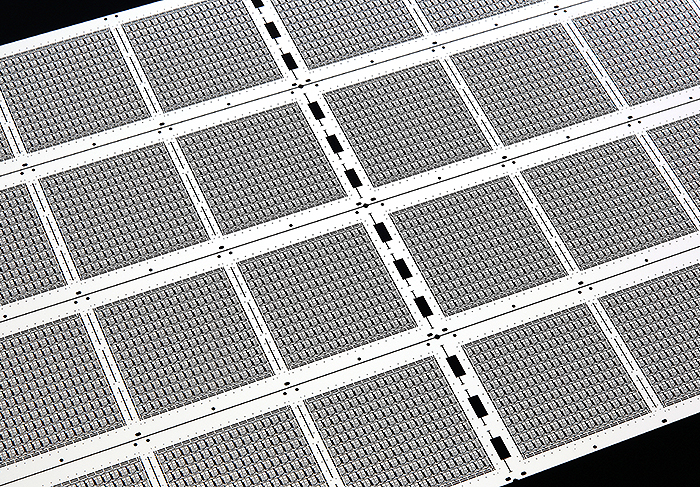

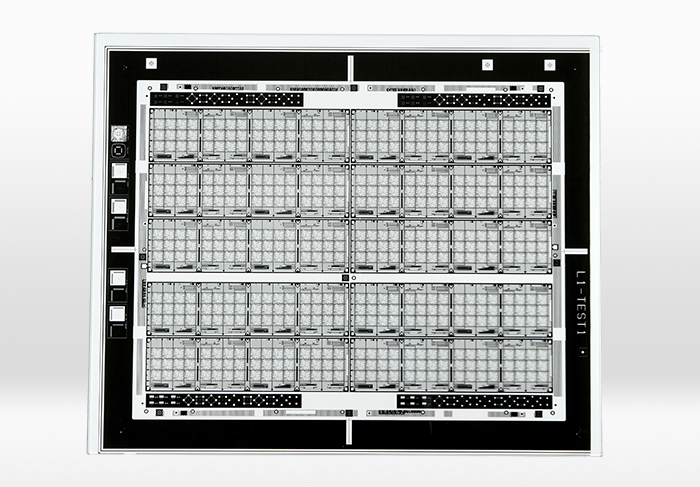
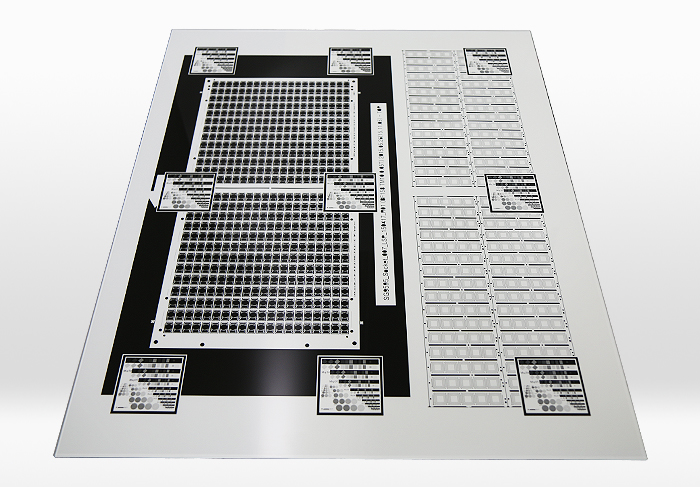
Emulsion Mask Specification
| Contents | Specification | ||
|---|---|---|---|
| Level | 1 | 2 | |
| Address Grid Plot Pitch | 0.5㎛ | 1.25㎛ | |
| CD (Critical Dimension) | 20㎛ | 30㎛ | |
| CD Tolerance | ± 2.00㎛ | ± 3.00㎛ | |
| Substrate | Only Soda-Lime Base | ||
| Material Size | 20 X 24 Inch ~ 36 X 59 Inch | ||
| Thickness | 4.8T | ||
General structure of Emulsion Mask

Protection Layer (Thickness : 0.3 ~ 1㎛)
It is placed on an emulsion layer to protect from external damage or scratches.
Emulsion Layer (Thickness : 5 ~ 7㎛)
Very small silver halide grains((AgCl), (AgBr), (Agl)) are dispersed in the gelatin binder.
Bare Glass Layer (Thickness : 2.8 ~ 5㎜)
Soda-lime only
Back Coating Layer (Thickness : 0.2 ~ 1㎛)
Used to prevent back-side spectrum during exposure process.
Definition of gelatin
What is the gelatin?

Gelatin is the main substance of defective tissue, and collagen fiber exists in cartilage, bone, and skin.
Why does it use as binder?
Homogenous Mixture
A medium supporting AgBr generated by the reaction between silver nitrate and sodium bromide to be dispersed finely and uniformly.
Strong Adhesion
When the temperature is lowered, it is to adhere to the substrate as gel
High Flexibility
Excellent material to build substrates requiring high flexibility, bending characteristics.
Optically Transparent
Optical Transparent
Porosity & Permeability
Gelatin penetrates well without damaging its structure and strength. Thus, some of the highly permeable gelatins are used in the chemical process to accelerate the action of silver chloride crystals, and to improve their action as anti-foggant.